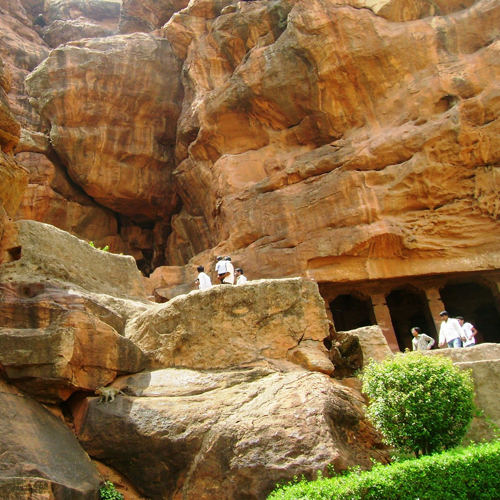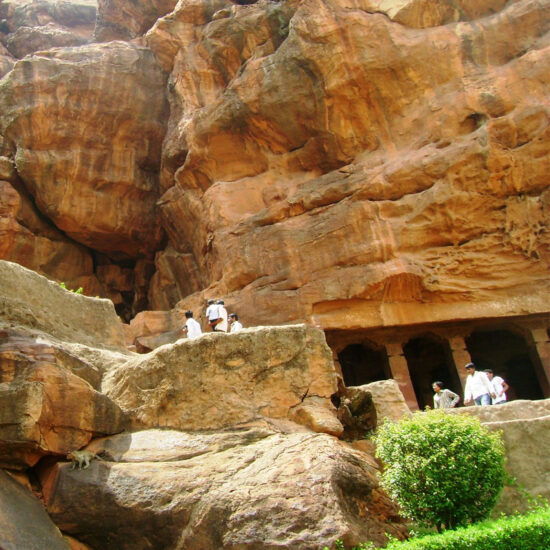Kerala, Tamil nadu, Karnataka, Goa Tour | 15 Days and 14 Nights



Including: Kochi, Nilgiri Mountain Toy Train, Ooty, Bandipur National Park, Mysore, Shravanabelagola, Hassan, Belur, Halebidu, Hampi, Aihole, Pattadakal, Badami, Goa.
Airports: Arrival Cochin, Departure Goa
Day 01: Travel to Kochi after Arrival at Cochin International Airport




Your driver will pick you up at the airport and drive you the 40 kilometers to Kochi, where you’ll be brought to your hotel located within the famous Fort Kochi area. You are free to relax at the hotel or go for a leisurely walk for the rest of the day. You will go on a sunset sail in the evening. Moreover, you will be transported to Kochi Harbour for this, where you can also see the harbor’s vibrant activities and the Chinese fishing nets. You can even prefer to view the evening Kathakali dance performance.
Spend the night in Kochi.
Day 02: Full-day in Kochi




Kerala’s most cosmopolitan city is Kochi. It serves as the nation’s primary marketplace for seafood and spices. Kochi, which is surrounded by an Arabian Sea saltwater lagoon, is actually made up of a number of tiny islands and peninsulas. With their mixture of Dutch, Portuguese, and English bungalows and their charming tiny alleyways, Mattancherry and Fort Kochi offer an old-world appeal, in contrast to mainland Eranakulam’s concrete commercial malls and opulent apartment towers. For generations, tourists from all over the world have been charmed by Kochi’s picturesque position, which is flanked by palm trees, verdant meadows, inland lakes, and backwaters.
You can have a stroll to take in the scenery, go shopping, or visit places like Jew Town and its synagogue, the Dutch Palace, the Dutch graveyard, and Saint Francis Church.
Spend the night in Kochi.
Day 03: Travel to Coonoor to get the Nilgiri Mountain Toy Train to Ooty




The renowned Nilgiri Mountain Toy Train will transport you to Coonoor from Ooty Railway Station. At 16.30 pm, the train departs with its own aura. The Nilgiri Valley may be seen on one side of the hour-long voyage, and the hills can be seen on the other. Your driver will meet you at the train station in Ooty after transporting your bags there by car. The British constructed the railway so they could access the Ooty mountain region’s cooler air during the summer. The rack and pinion system is used by the steam locomotive to climb gradients.
Spend the night in Ooty
Day 04: Travel to Bandipur National Park after visiting Ooty




You will witness View Point and the tea estates while in Ooty. The magnificent “Hill Road” will next lead you to Bandipur National Park, where you’ll arrive and be in the care of wildlife experts until late the following morning. Lunch is included in the afternoon program, which also includes a 3-hour jeep safari with a guide to see wild animals. Then relax before dinner followed by a movie about wild animals. This is an open-air, untamed jungle park. It is hard to predict what you will see on a safari because it is not a zoo. Although the majority of visitors focus on animals including monkeys, elephants, deer, boars, antelopes, reptiles, bison, birds, flowers, butterflies, plants, and trees. A leopard, bear, or even a tiger might be spotted by fortunate tourists. Remember to bring your camera.
Spend the night in Bandipur
Day 05: Travel to Mysore
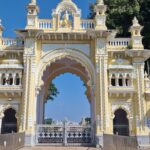



Brunch is followed in the morning by a second, 3-hour jeep safari as the adventure at the Bandipur continues. You’ll depart for Mysore in the late morning. Your driver will take you on a nighttime driving tour of Mysore’s landmarks, including a stop at the renowned Devaraja fruit and vegetable market.
Spend the night in Mysore
Day 06: Full-day in Mysore




Mysore is a captivating city that is renowned for its ostentatious festival celebrations. Since 400 years ago, Dusshera has been a highly anticipated holiday that draws large crowds to see the spectacular celebrations. Mysore was the capital of the Wadiyar Hindu dynasty skirted by wooded hills and situated among fertile fields. It ruled southern Karnataka from 1399 to 1947, except for the 38-year rule of the Muslim warlord Haider Ali and his son, Tipu Sultan, in the 18th century.
Ashtanga Yoga is a style of yoga that synchronizes the breath with a variety of postures, and it is very popular in the city. Additionally, it is renowned for its fine sandalwood and silk products. The city has a lot of things to offer for all tourists with a wide variety of sightseeing locations, including exotic palaces and beautiful gardens. With our expertly designed same-day Mysore tour, you can discover the allure of the city.
The visits would also constitute the Chamundi Hill, Amba Vilas Palace, the Cathedral of Saint Philomena, the enormous crouching Nandi, Lalitha Mahal Palace, the residence of Sultan Tippu, Krishnaraja Circle, and Srirangapattana. You can even enjoy going to the nearby Ranganthittu Bird Sanctuary, depending on the weather and the season.
Spend the night in Mysore
Day 07: Travel to Shravanbelagola as well as Hassan


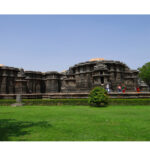

Shravanabelagola is a small city located between two granite hills, Indragiri and Chandragiri, on its famous White Pond. It is South India’s most important Jain site. It is dominated by a massive monolithic statue of Gommateshvara, also known as Bahubali, the son of the first Jain Tirthankara, standing 17.7m tall. The statue of the naked savior stands on an anthill on the summit of the very tall Indragiri Hill, staring impassively ahead. Creepers are entwined around his legs and arms, indicating how long he stood immobile in meditation. An inscription at the base records Chamundaraya, the powerful minister of Rajamalla IV, one of the Ganga kings, and the consecration of the temple in AD981.
Following the visit, you will drive to Hassan.
Spend the night in Hassan.
Day 08: Full day in Belur, Halebidu and return move to Hassan



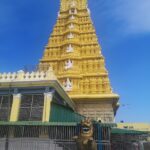
Among the wonders of South Indian art and architecture are the temples built by the Hoysala kings (12th–13th centuries) and their skillful ministers. They represent the union of the columned mandapas of the South with the curved towers (shikhara) of North India. They stand out for their distinctive star-shaped plan and their lavish surface ornamentation. The Chennakeshva Temple in Belur is renowned for its shrine, pillars, and sculptures. King Vishnuvardhan erected it in 1117 to honor the Hoysalas’ victory over the Cholas.
The Vijayanagar king built a towered gopura in the 16th century that serves as the temple’s entrance. Some of the finest and most impressive examples of Hoysala architecture can be found in Halebidu. A tourist’s paradise, Hoysaleswara Temple boasts exquisite pillars and sculptures. King Vishnuvardhana began construction on the structure in 1121, and it took ten years to complete. Its structure consists of a pair of identical Shiva temples. Depending on the amount of time available, the Kedareshwara Temple in Halebidu is a lesser-known tourist destination but is still worthwhile a quick visit.
Spend the night in Hassan
Day 09: Travel to Hampi




Hampi the UNCESCO recognized World Heritage site located by the Tungabhadra River surrounded by 500 ancient monuments, beautiful temples, bustling street markets, bastions, treasury buildings and captivating remains of Vijayanagar Empire, it was a fortified city. Chronicles left by Persian and European travellers, particularly the Portuguese, says that hindu Virupaksha temple, near the revived Hampi Bazar. A carved stone chariot stands in front of the huge Vittala Temple site. Southeast of Hampi, daroji Bear sanctuary is home to the India sloth bear.
Spend the night in Hampi
Day 10: The first full day in Hampi




On the southern bank of the Tungabhadra River, Hampi, a UNESCO World Heritage Site, is home to the spectacular ruins of Vijayanagar, the “City of Victory.” For more than 200 years, Hampi served as the capital of three generations of Hindu emperors. Under Krishnadeva Raya and Achyuta Raya, Hampi was at its height. It still serves as a significant religious hub. The site includes the royal and holy centers. It is on a great site, with granite boulders and rugged ridges serving as natural defenses. The view is magnificent. The sacred center of the city was guarded by a fortified urban core that was divided from it by an irrigated valley through which still-existing canals and rivers once ran.
The Krishna Temple, Virupaksha Temple, King’s Balance, Elephant Stables, Lotus Mahal, Queen’s Bath, Mahanavami Platform, Stepped Tank, and Narasimha Monolith are among the places that will be visited.
Spend the night in Hampi.
Day 11: Second Full day in Hampi




The Vitthala Temple, the largest of all the religious structures in the sacred center, stands as the pinnacle of Vijayanagar art and construction. Although its creator is still unknown, two of Vijayanagar’s finest emperors, Krishnadeva Raya and Achyuta Raya, expanded it in the 16th century. The large open hall, or mahamandapa, which is erected on a low platform and supported by elaborately carved pillars, is located before the main shrine. 11 years before the city was captured and abandoned, in 1554, a military commander gave this as a gift.
Spend the night in Hampi.
Day 12: Travel to Badami en route visit Aihole, Pattadakal




With roughly 125 stone temples that date back to the fifth century, Aihole is renowned for its Chalukyan architecture. The Durga temple is the biggest and best, and it’s also the most peculiar because of its apsidal sanctuary and open colonnade. The temple is perched atop a high plinth, and steps at one end lead to a portico that is adorned with intricate carvings of seductive guardians and couples on its columns. The niches lining the colonnade contain further works of sculpture, including those of Durga, Harihara, Narasimha, Vishnu with Garuda, and Shiva with Nandi. In contrast, the sanctuary’s circular plinth and the inside of the hall are both unadorned. The name of the temple is misleading because it no longer contains the image that was formerly worshipped there.
A UNESCO World Heritage site is Pattadakal. The Malprabha riverbanks are a lovely location for its holy complex. The magnificent structures from the eighth century serve as a suitable capstone to the Chalukya Kings’ artistic accomplishments. Both Nagara and Dravidian temple architecture may be seen in the town.
After your visit, you’ll go on to Badami.
Spend the night in Badami.
Day 13: Travel to Badami Cave Temple before heading Goa




You will visit Badami, which has magnificent Cave Temples. The mighty Chalukya rulers who controlled the Deccan throughout the sixth and seventh centuries had Badami as their royal city. This old town is renowned for its rock-cut and structural relics. It is dramatically set within a horseshoe of red sandstone cliffs, overlooking the serene green waters of the sizable Agastya lake. The intricately adorned Cave Temples, which are carved into the cliff and each have a different deity as a patron—Shiva, Vishnu, or Jain Saints—are there.
You will travel to Goa following the visit.
Spend the night in Goa.
Day 14: Full day in Goa




Goa is a little state on the Konkan Coast that is less than 4 square kilometers. Goa’s unique culture is a result of colonial rule in the region. Alfonso de Albuquerque founded a little but potent Portuguese colony here in 1510. Goa joined the Indian Union in 1961, but the people’s attire, language, religion, and food nevertheless reflect centuries of Portuguese control. They also incorporate a blend of the wistful fado and the melodic rhythms of regional Konkani folk melodies in their music. The picturesque beaches, luxuriant paddy fields, coconut plantations, and opulent homes of Goa are well-known. The beautiful churches and Hindu temples are further attractions. The welcoming, laid-back people of Goa go above and beyond to make guests feel good.
The beach, a river tour, Reis Magos with its fort and church, the Anjuna Beach flea market (only on Wednesdays), the Bom Jesus Basilica, and some of the other outstanding religious structures can all be included in your itinerary.
We advise you to see the Bom Jesus Basilica, which is regarded as one of India’s finest specimens of baroque architecture and is a UNESCO World Heritage Site. Because it contains Francis Xavier, the patron saint of Goa, in his earthly form, it is highly regarded by Roman Catholics everywhere.
Spend the night in Goa.
Day 15: Travel and drop off to Goa International Airport




The things you do today will depend on how much time you have before your trip. The majority of our visitors decide to relax at the hotel.
Before your return flight, you will be transported to Goa International Airport.

-
Included
AC Vehicle -
Not Included
Auto RikshaBikeEntrance fees to the selected venuesHouse Boat RentKerala LunchProfessional GuideTea and Snacks
Tour Plan
Tour Plan
Tour Location
Kochi
Customer Review







